Let's talk Irish Setters
Irish Setters are instantly recognisable by their eye-catching feathered, rich red coats, but these lively and intelligent dogs have much more to offer besides their graceful good looks. They were originally bred as hunting dogs and still sometimes fulfil that role today, but as friendly as they are athletic, Irish Setters also revel in the role of family pet. Albeit sometimes mischievous family pets whose boundless energy needs to be channelled into exercise and play.
Official name: Irish Setter
Other names:
Origins: Ireland
Drooling tendencies
2 out of 5Shedding Level
4 out of 5Energy level*
5 out of 5Compatibility with other pets
5 out of 5Warm weather?
3 out of 5Suited to apartment living
1 out of 5Family pet?*
5 out of 5Can stay alone
1 out of 5
| Male | Female |
|---|---|
| Height | Height |
| 58 - 67 cm | 55 - 62 cm |
| Weight | Weight |
| 15 - 30 kg | 15 - 30 kg |
| Life stages | |
|---|---|
| Adult | |
| 1 to 7 years | |
| Mature | Senior |
| 7 to 10 years | from 10 years |
| Baby | |
| Birth to 2 months | |
Drooling tendencies
2 out of 5Shedding Level
4 out of 5Energy level*
5 out of 5Compatibility with other pets
5 out of 5Warm weather?
3 out of 5Suited to apartment living
1 out of 5Family pet?*
5 out of 5Can stay alone
1 out of 5
| Male | Female |
|---|---|
| Height | Height |
| 58 - 67 cm | 55 - 62 cm |
| Weight | Weight |
| 15 - 30 kg | 15 - 30 kg |
| Life stages | |
|---|---|
| Adult | |
| 1 to 7 years | |
| Mature | Senior |
| 7 to 10 years | from 10 years |
| Baby | |
| Birth to 2 months | |
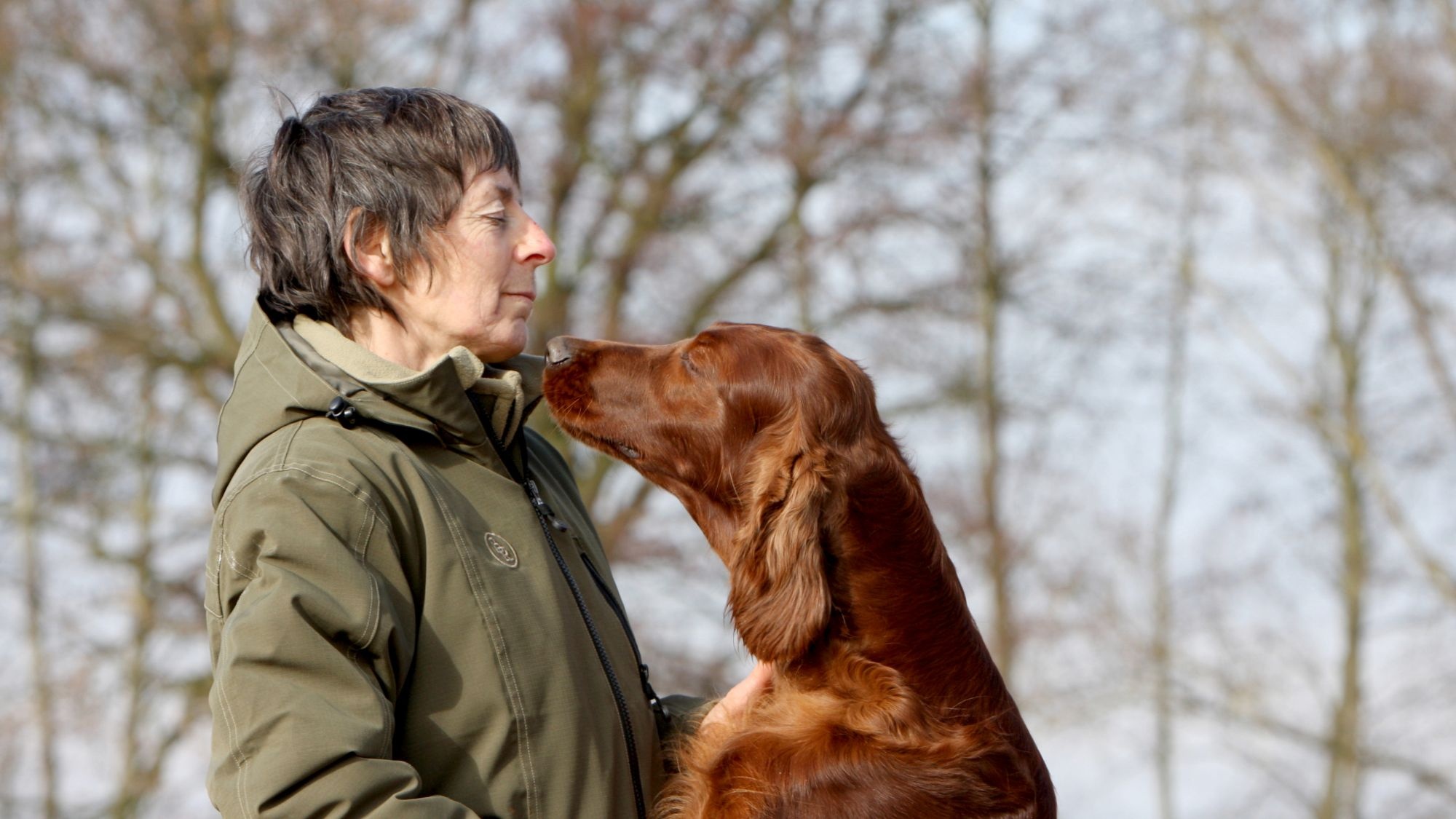
Get to know the Irish Setters
All you need to know about the breed
The flame-haired Irish beauty is a staple of the Emerald Isle’s myths and legends – and the Irish Setter is living proof that they don’t just come in human form. The Irish Setter’s mahogany locks have ensured over the years that the breed, originally a hunting dog, has become a prize-winning dog show champion, as well as a much-loved family pet.
Their joie de vivre is irrepressible and these high-energy dogs have much more to offer than just their beautiful coat. Although with their whimsical big brown eyes and their abundant auburn locks, they really are breathtakingly beautiful dogs.
Irish Setters - the set part of their name refers to how they were originally trained to stand to show they had spotted prey - make their doggy presence felt, and in a good way. That means they need plenty of exercise, plenty of attention and they like to be where their humans are. They are not keen on being left alone for extended periods. Once trained, they are gentle with children and other animals in their family.
However, Irish Setters have a reputation for being a little … overexcited, shall we say? That energetic reputation isn’t entirely undeserved but these lovely dogs get away with a little bit of bumptiousness because they’re also affectionate, loyal and sociable. It’s fitting that Irish Setters come from the land of good craic (a Gaelic word for fun) as that’s exactly what these Celtic canines are.
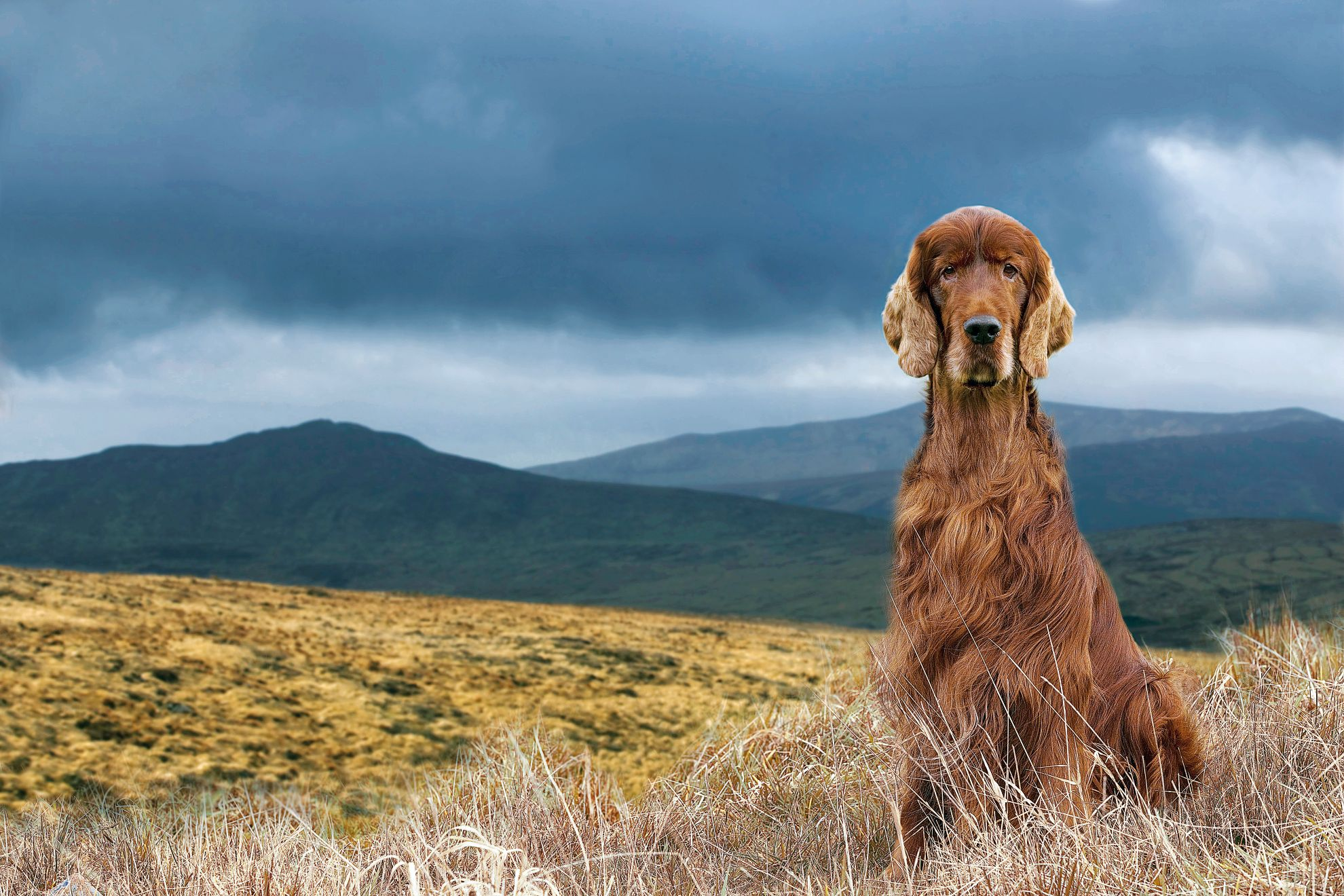
2 facts about Irish Setters
1. Big Red
Big Red, the eponymous star of Jim Kjelgaard’s 1945 novel and a 1962 Walt Disney film, is probably the most famous Irish Setter ever, despite being fictional. Some real-life Irish Setters have had high profiles too – several Irish Setters have kept U.S. presidents company in the White House, including King Timahoe, known as Tim, who was named after the hamlet Richard Nixon’s ancestors came from in Ireland.
2. Perennial puppies
Mischievous puppyhood lasts a long time for Irish Setters, in temperament at least. The breed is known to be slow to mature: some owners report that their dogs never fully grow out of their puppyish ways … but around two years is quite normal. That means you’ll likely have a rambunctious, high-energy and full-sized setter “puppy” on your hands. Early, consistent training and socialisation activities are good ways to help your Irish Setter settle down.
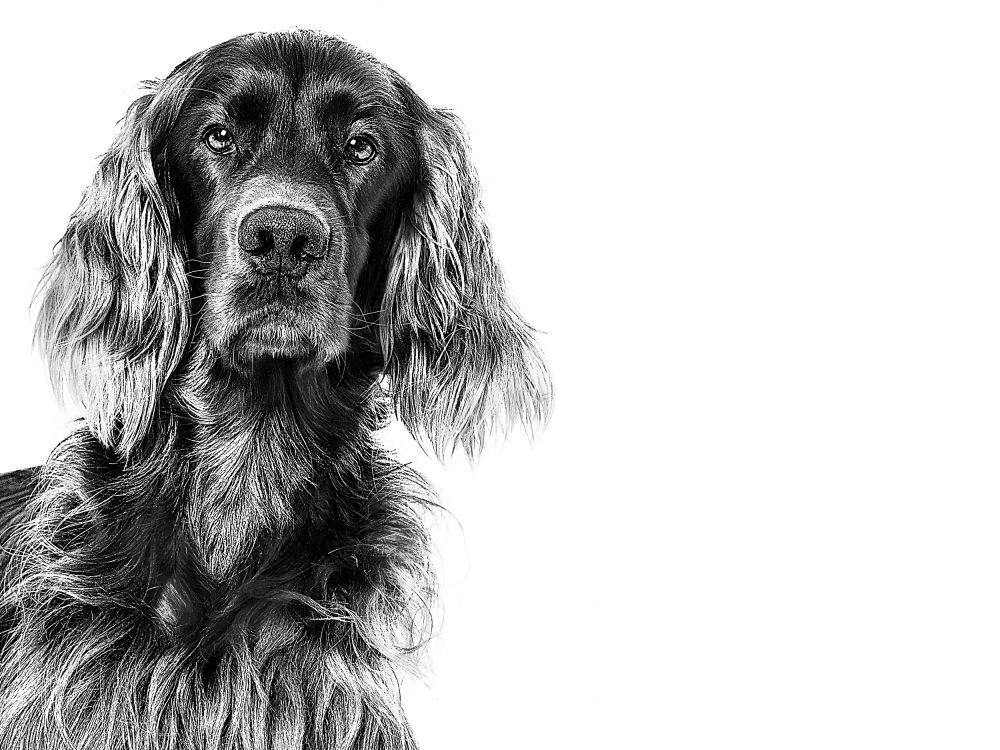
History of the breed
Like other setters, the Irish Setter was originally bred as a hunting dog and named after the stance it was trained to adopt, “setting” or lying low to show human hunters it had found birds without getting in the way of the nets that would then be thrown to trap them.
As hunting methods changed so did the breed, but even standing upright, setters have kept the evocative name.
The Irish Setter is the result of breeding between the Irish Red & White Setter and a mystery red-coated breed as far back as the 19th century. It owes its sleek, athletic silhouette to the hunters of the time who wanted dogs that were rangy and tall enough to lope tirelessly across the flat expanses of Irish countryside.
From head to tail
Physical characteristics of Irish Setters
1.Ears
2.Head
3.Body
4.Coat
5.Tail
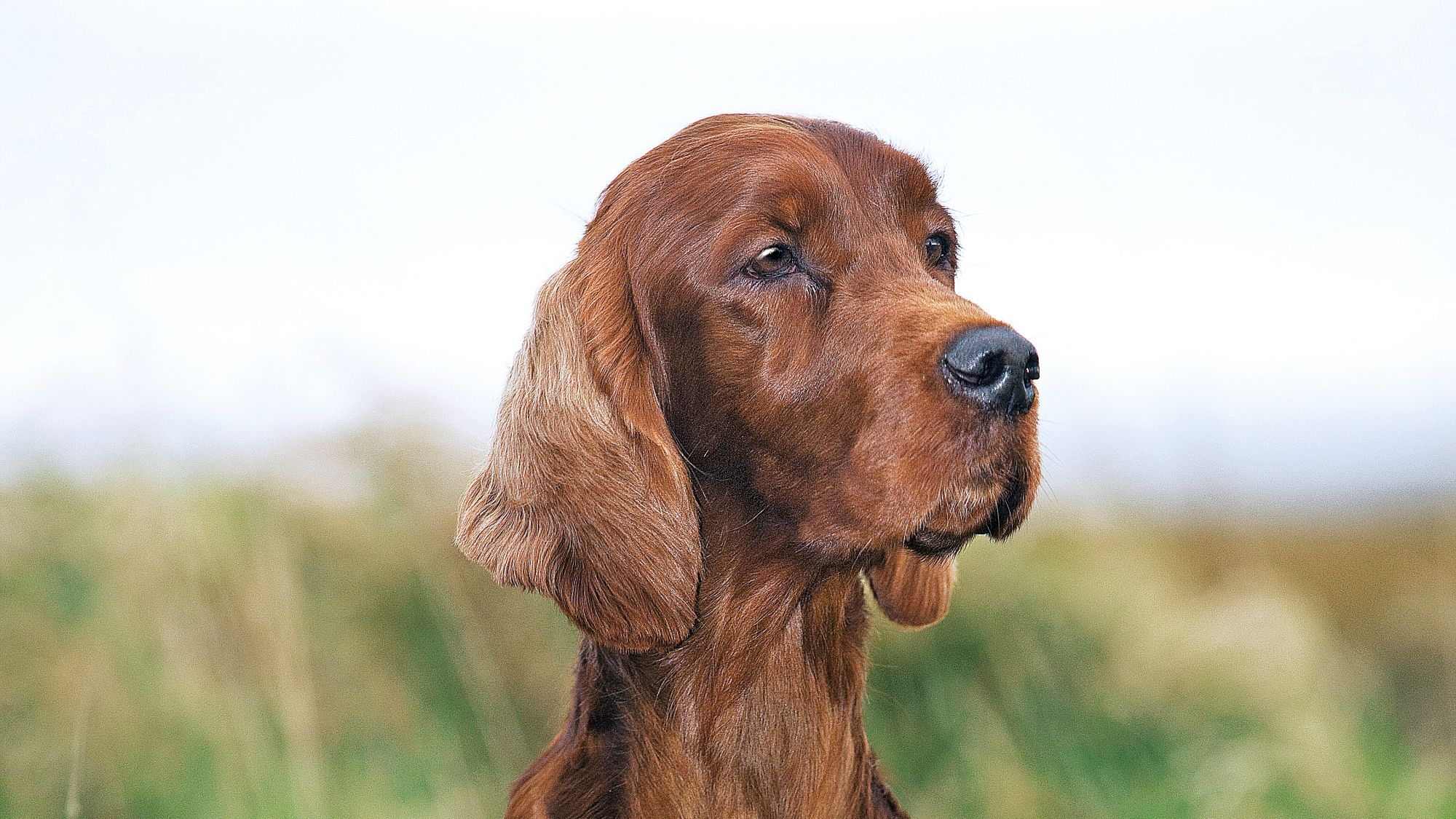
Things to look out for
From specific breed traits to a general health overview, here are some interesting facts about your Irish Setter
Look out for signs of bloat
The Irish Setter is prone to gastric dilatation-volvulus (GDV), more commonly known as bloat, as are other large and deep-chested dog breeds. Bloat is a sudden and life-threatening swelling of the dog’s stomach and subsequently their abdomen requiring immediate attention from a vet. Symptoms include a bloated abdomen, restlessness, retching, salivation and whining or a sudden stillness. To minimise the risk of bloat occurring, offer your Irish Setter several small meals instead of one large one and avoid vigorous exercise around mealtime.
Separation anxiety
After centuries of working alongside humans, it’s no surprise that Irish Setters have developed into affectionate and loyal dogs that get attached to their humans and consider themselves part of the family. They thrive on companionship and they certainly don’t like being left alone – anything more than a few hours may result in destructive behaviour such as chewing or barking.
Healthy diet, healthier dog
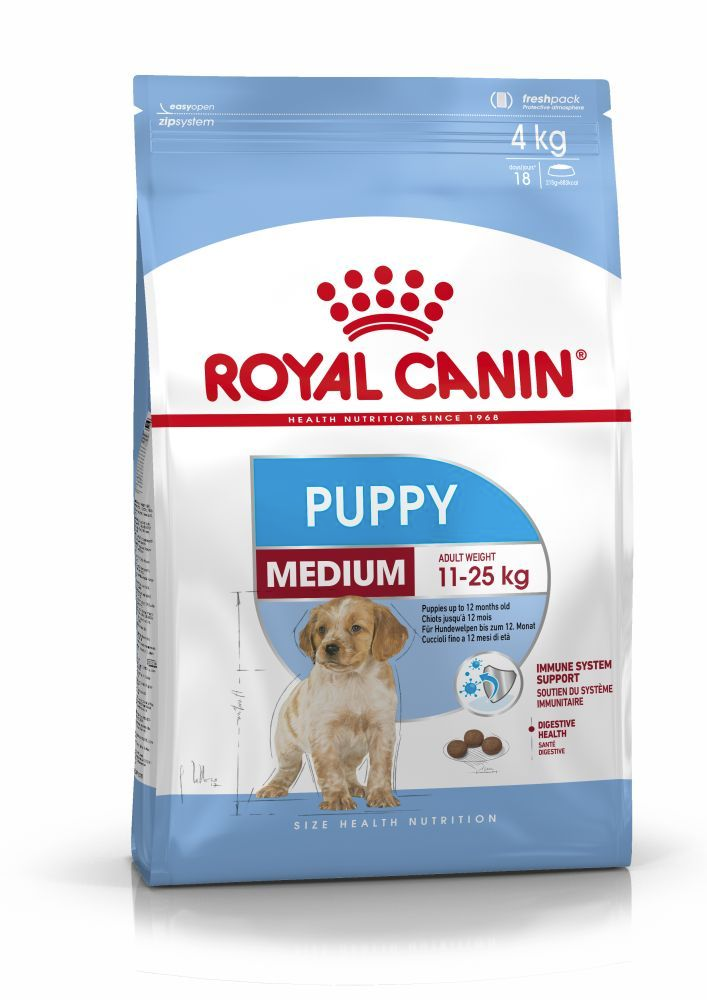
When choosing food for an Irish Setter, there are many factors to consider: their age, lifestyle, activity level, physiological condition, and health including potential sickness or sensitivities. Food provides energy to cover a dog’s vital functions, and a complete nutritional formula should contain an adjusted balance of nutrients to avoid any deficiency or excess in their diet, both of which could have adverse effects on the dog.
Clean and fresh water should be available at all times to support good urinary regularity. In hot weather and especially when out exercising, bring water along for your dog’s frequent water breaks.
Energy intake may also have to be adapted to the climatic conditions. A dog that lives outdoors in winter will have increased energy requirements.
The following recommendations are for healthy animals. If your dog has health problems, please consult your veterinarian who will prescribe an exclusively veterinary diet.
An Irish Setter puppy’s requirements, in terms of energy, protein, minerals, and vitamins, are much greater than those of an adult dog. They need energy and nutrients to maintain their body, but also to grow and build it. Until they are 12 months old, an Irish Setter puppy’s immune system develops gradually. A complex of antioxidants – including vitamin E – can help support their natural defences during this time of big changes, discoveries, and new encounters. Their digestive functions are different from an adult Irish Setter’s, too: their digestive system is not mature yet so it’s important to provide highly digestible proteins that will be effectively used. Prebiotics, such as fructo-oligosaccharides, support digestive health by helping balance the intestinal flora, resulting in good stool quality.
Similarly, a puppy’s teeth – starting with the milk teeth, or first teeth, then the permanent teeth – are an important factor that needs to be taken into account when choosing the size, shape, and texture of kibble. This short growth phase also means high energy needs, so the food must have a high energy content (expressed in Kcal/100g of food), while concentrations of all other nutrients will also be higher than normal in a specially formulated growth food. It is recommended to split the daily allowance into three meals until they are six months old, then to switch to two meals per day.
Throughout their life, it is important to avoid feeding Irish Setters human foods or fatty snacks. Instead, reward them with kibble taken from their daily meal allowance, and strictly follow the feeding guidelines written on the package in order to prevent excessive weight gain.
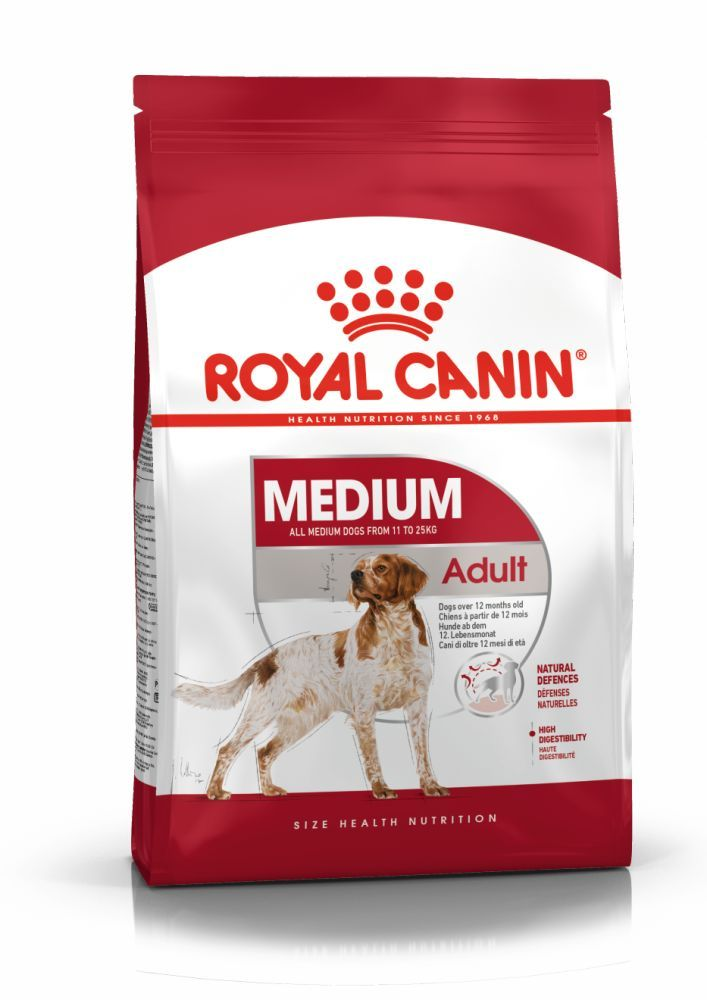
The main nutritional goals for adult Irish Setters are:
Maintaining an ideal body weight by using highly digestible ingredients and keeping the fat content at a sensible level.
Promoting optimal digestibility with high quality protein and a balanced supply of dietary fibre.
Helping to preserve the health and beauty of the skin and coat with the enriched addition of essential fatty acids (especially EPA-DHA), essential amino acids, and B vitamins.
To help support their natural defences, a formula enriched with an antioxidant complex and containing mannan-oligosaccharides is recommended.
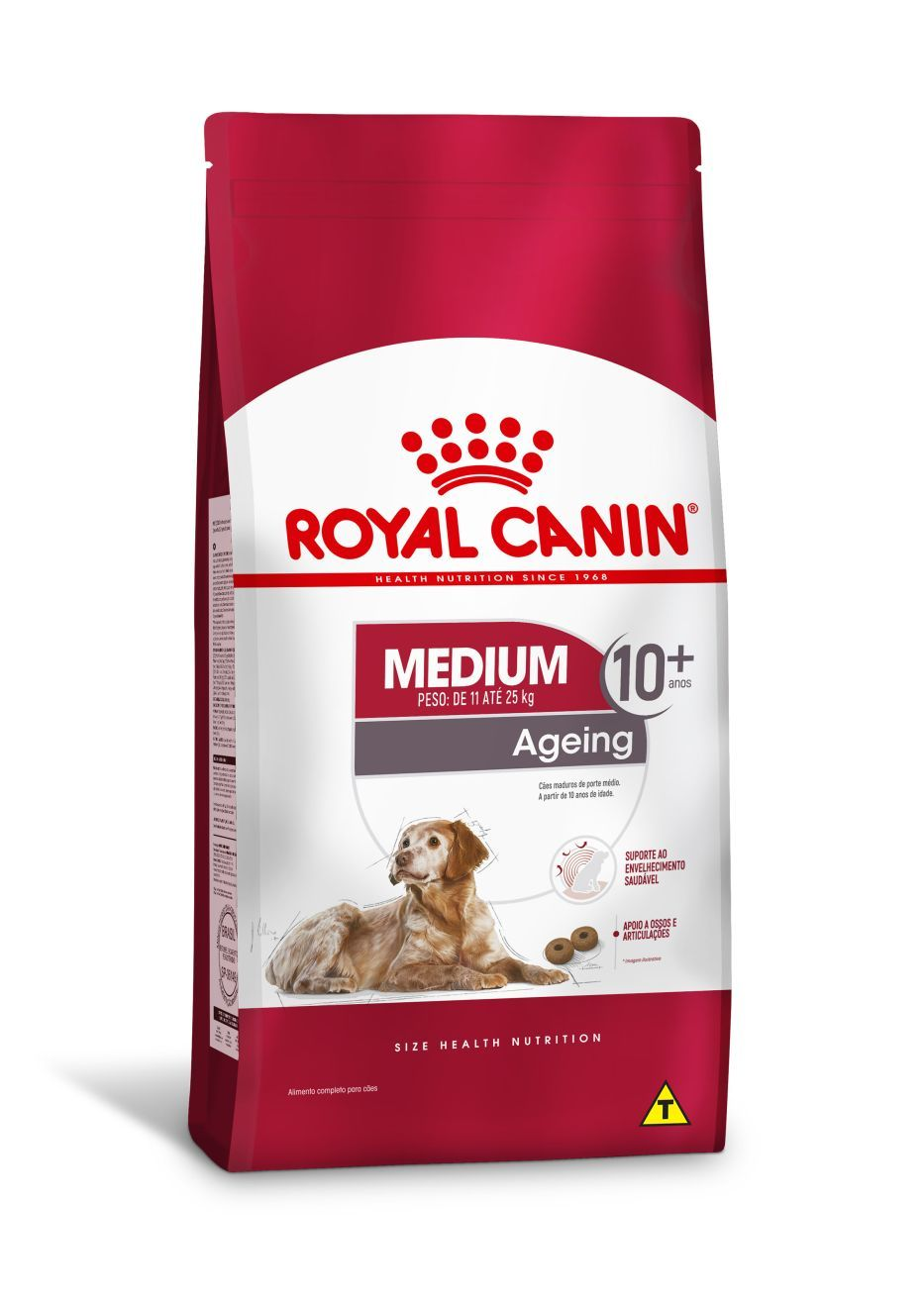
After seven years old, Irish Setters start facing the first signs of ageing. A formula enriched with antioxidants will help maintain their vitality, and specific nutrients, such as chondroitin and glucosamine, will help maintain healthy bones and joints. Ageing is also accompanied by the modification of digestive capacities and particular nutritional requirements, so food for older Irish Setters should have the following characteristics:
Higher vitamin C and E content. These nutrients have antioxidant properties, helping to protect the body’s cells against the harmful effects of the oxidative stress linked to ageing.
High-quality protein. Contrary to a widely held misconception, lowering the protein content in food brings little benefit in limiting kidney failure. In addition, older dogs are less efficient at using dietary protein than younger dogs. Reducing the phosphorous content is a good way of slowing down the gradual deterioration of kidney function.
A higher proportion of the trace elements iron, zinc, and manganese to help maintain the good condition of the skin and coat.
A higher quantity of polyunsaturated fatty acids to help maintain the quality of the coat. Dogs can normally produce these fatty acids, but ageing can affect this physiological process.
As they age, dogs increasingly suffer from teeth problems. To ensure they continue to eat in sufficient quantities, the shape, size, and hardness of their kibble needs to be tailored to their jaw.
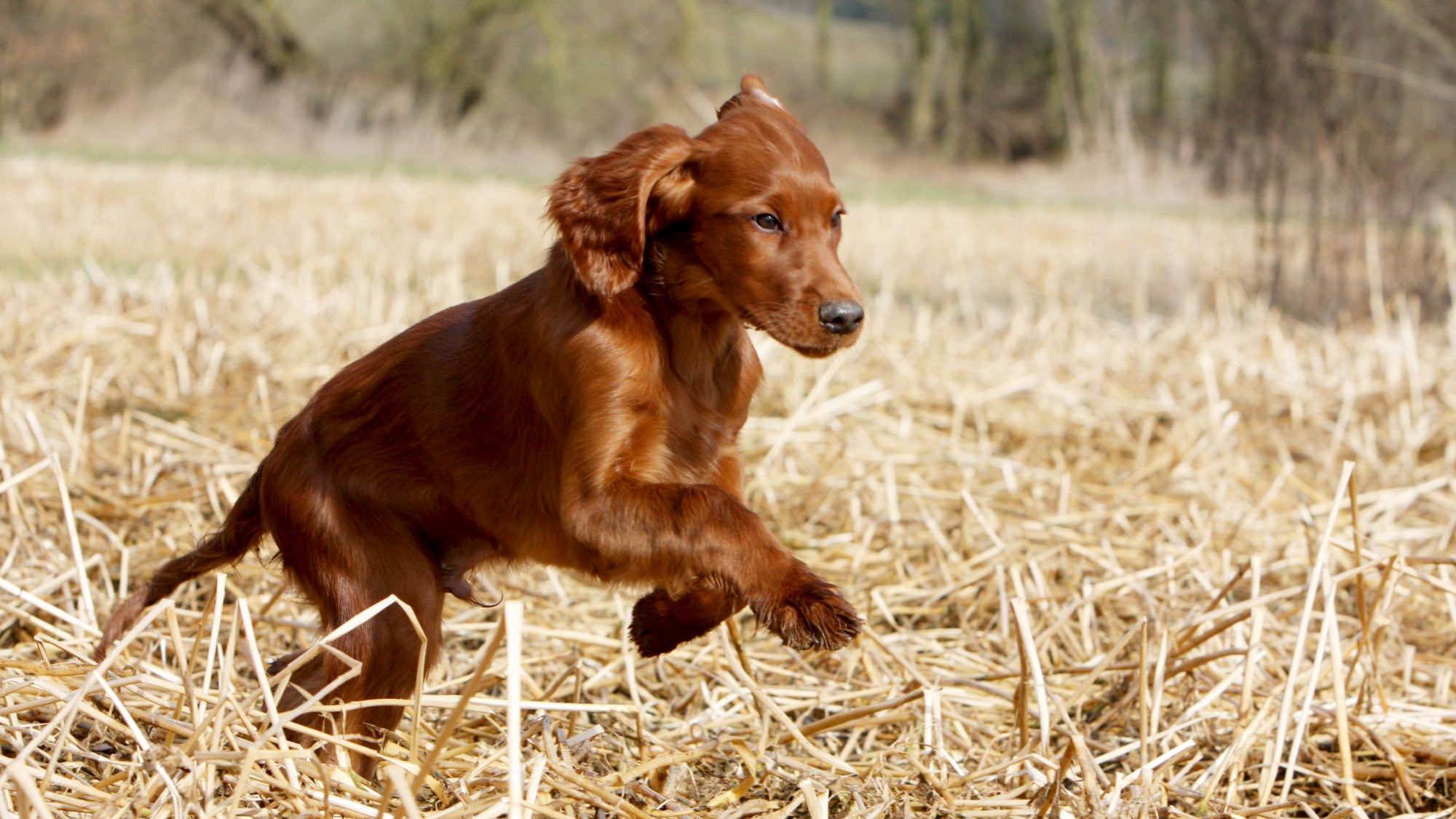
Caring for your Irish Setter
Grooming, training and exercise tips
7/7
All about Irish Setters
Put it this way: you’ll need patience. Irish Setters are intelligent dogs and should – eventually – respond well to training. But they’re inquisitive (read easily distracted) and can be stubborn too. Consistent, reward-based training will work; just make sure the rewards come out of their daily rations to keep your Irish Setter at a healthy weight.
Once trained, Irish Setters get on well with children although like any other breed, they shouldn’t be left alone with little ones. Some Irish Setters can be a little exuberant by nature and others a bit more reserved, but early socialisation should help them get used to people and other animals and settle down into their role as the most beautiful member of almost any family.
Suggested Breeds
Read more on this topic
- Veterinary Centers of America https://vcahospitals.com/;
- Royal Canin Dog Encyclopaedia. Ed 2010 and 2020
- Banfield Pet Hospital https://www.banfield.com/
- Royal Canin BHN Product Book
- American Kennel Club https://www.akc.org/
Like & share this page